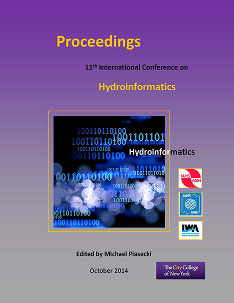Document Type
Presentation
Publication Date
8-1-2014
Abstract
In this study, we contribute a comprehensive assessment of massively parallel multiobjective evolutionary algorithm (MOEA)-based search using a highly challenging optimization—assimilation application. The application focuses on a four objective groundwater monitoring application in which parallel scalability is tested across compute core counts ranging from 64 to a maximum of 8192. Our many-objective visual analytics framework clarifies how to assess and attain highly effective search on large scale high-performance computing systems. Moreover, our results also refute the common assumption that adding objectives in many-objective evolutionary optimization will always increase the computational difficulty of a problem. Our results agree with prior theoretical analysis demonstrating several instances where the overall four objective groundwater monitoring problem formulation is actually easier to solve than lower dimensional formulations composed of subsets of the original formulation’s objectives. Although a groundwater application is used to demonstrate our parallelization, the visual analytics and metrics utilized to characterize the parallel scalability of MOEA-based search are broadly applicable in water resources and beyond.



Comments
Session S6-02, Special Session: Evolutionary Computing in Water Resources Planning and Management II